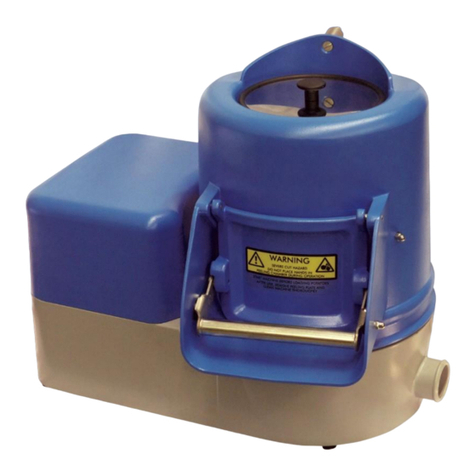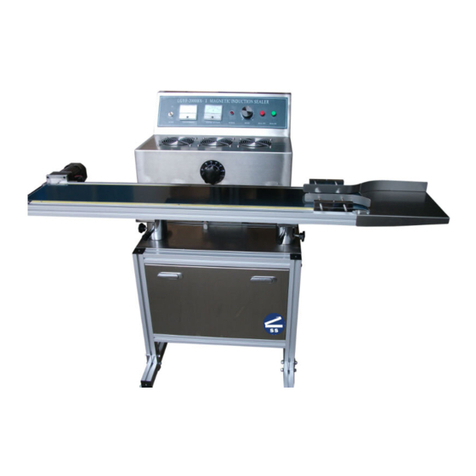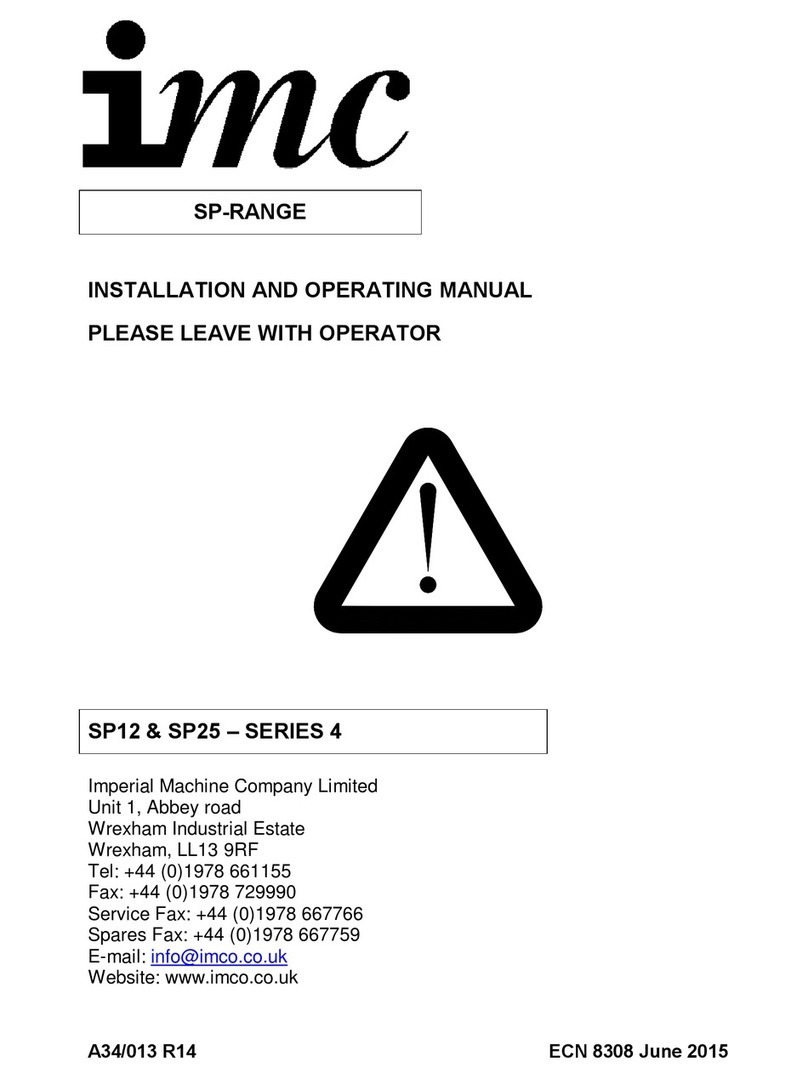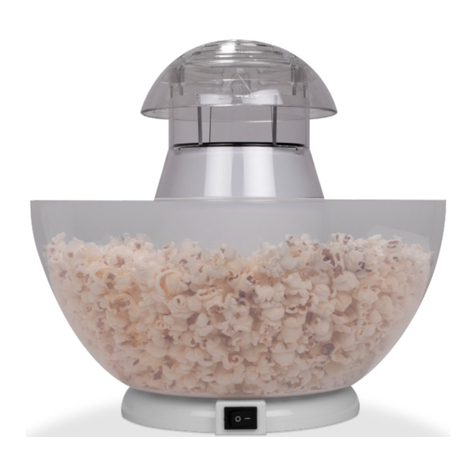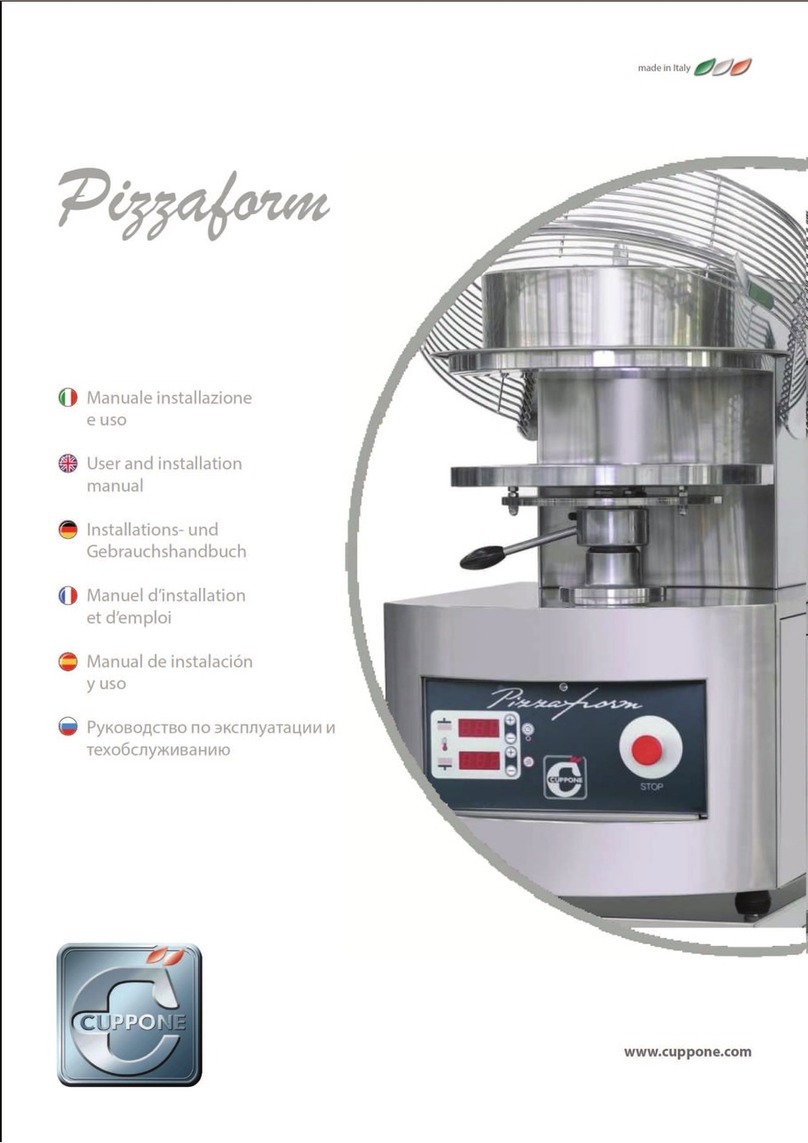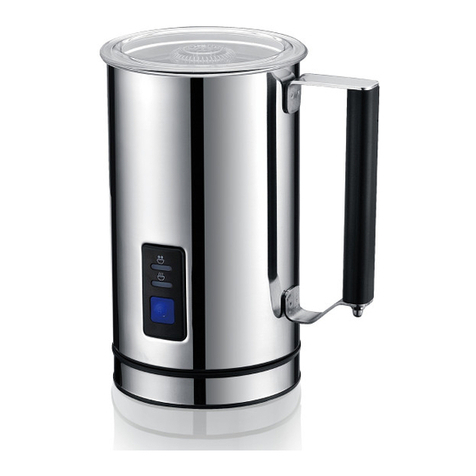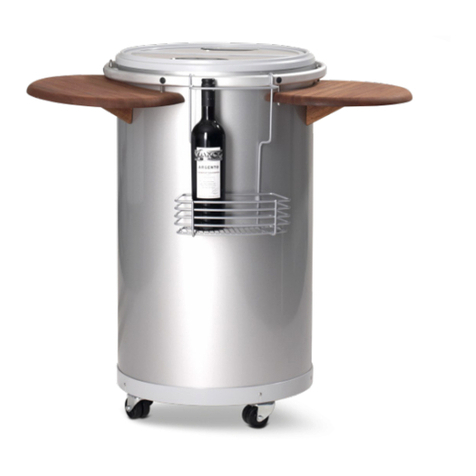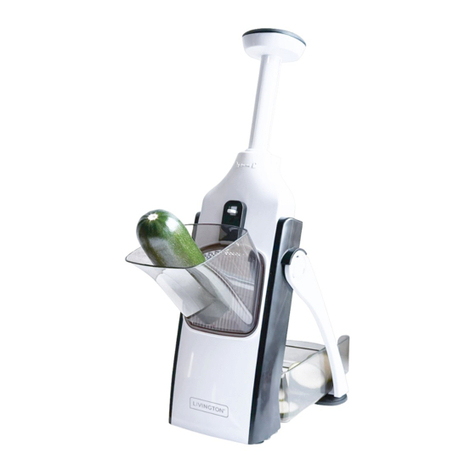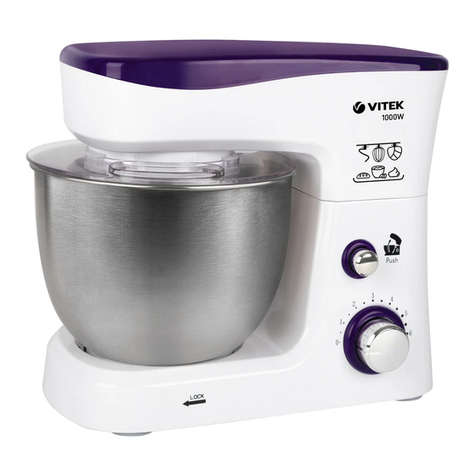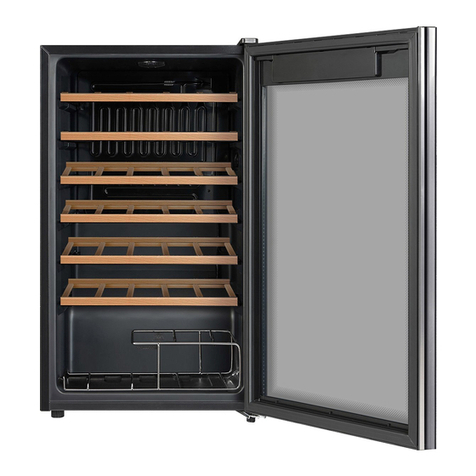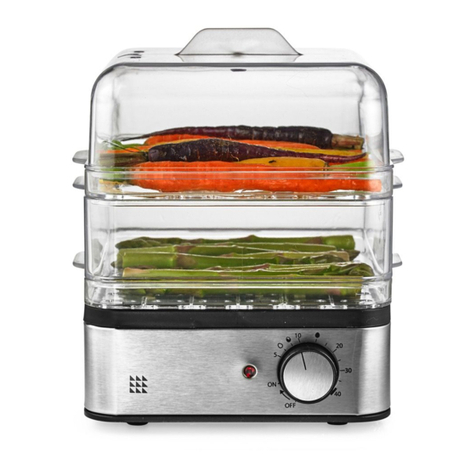IMC IMC-2000BX User manual

International Machine Concepts
Model IMC-2000BX
Air-Cooled Continuous Electromagnetic
Induction Sealing Machine
(Please read the manual carefully before use.)
Operation Manual

1
I. General
The technology, in which aluminum plastic composite materials get heated and
sealed through electromagnetic induction, is a relatively advanced and popular
non-contact sealing technology both at home and abroad. The electromagnetic
induction sealing machine manufactured under this principle has increasingly become
the necessary equipment in medicine, pesticide, grease, subsidiary foodstuff, health
product, beverage, cosmetics, chemical and other industries for high-quality airtight
sealing of plastic, glass and other non-metallic bottles, so as to improve product
quality level, achieve enhanced sealing and shelf-life performance, as well as meet
higher requirements for anti-theft and security.
The company adopts the internationally advanced heating processing
technology, and selects imported OEM components for key electronic components.
Also, through improvements with years of accumulated production experience and
exploration, it now has developed and produced Model LGYF-2000 Series
electromagnetic induction sealing machine, which has made major breakthroughs in
sealing range, machine performance stability and efficiency, becoming a high-quality
but inexpensive induction sealing equipment more popular in the domestic market.
II. Principle:
Based on the principle that metal objects would produce friction and thus
generate heat under the high-frequency electromagnetic field, this machine relies
upon electromagnetic induction aluminum to make foil heat and melt adhesive
membrane on the lower layer of aluminum foil to bond with the sealing surface, to
realize continuous, fast and non-contact sealing work.
III. Characteristics:
★The sealing range of the machine is adjustable, and with either large or small
sealing surface, can get the ideal sealing quality and efficiency.
★In case of the equipment failure of the machine in the course of work, the
conveyor automatically stops working, to realize the function of isolating
the products sealed and those unsealed.
★The conveyor belt adopts electronic step less speed adjustment, and during
the sealing process can based on voltage and current changes make

2
speed adjustment in a timely manner, in order to achieve the best sealing
quality.
★In this machine, the height of sensor head adopts electric adjustment,
capable of sealing the objects within the range of 40 to 400mm in height.
★This machine has supply and voltage meter and sealing ammeter, so that it
can make timely adjustments when voltage and current fails to meet
normal job requirements, to ensure the sealing quality.
VI. Main Technical Parameters
1. Input voltage: AC220V±10%, 50Hz
2. Input voltage: <10A
3. Sealing current: Static<2A Dynamic<10A
4. Operating frequency: 70~80KHz
5. Output power: ≤2000W
6. Enclosure protection class: IP2 I
7. Sealing diameter: Φ20mm~Φ130mm (Optimal diameter: Φ30mm~Φ120mm)
8. Bottles height: 40~400mm
9. Transportation diameter: ≤Φ200mm
10. Sealing speed: 2 to 12 m/min (bottle size, material, and sealing membrane)
11. Conveyor unit bearing load: ≤20Kg
12. External dimensions: 155×55×135cm
13. Net weight: 70Kg
V. Equipment installation and use precautions:
1. It is necessary to connect the ground wire before use , and then switch on the
power.
(The ground wire should not directly use three-phase outlet for grounding, but
a safe and reliable grounding wire should have connected separately, to ensure
safe use of electricity)
2. The cross-sectional area for power cord and ground wire should be not less
than 1.5mm2. In case of use under supply voltage instability, mount AC
automatic regulator, to ensure the quality of sealing and prevent damage to

3
the equipment.
3. The equipment must be used in a dry, clean and ventilated environment,
away from various types of heat sources.
Operating in the wet environment with severe acid corrosion will significantly
shorten the use life of equipment.
For use in places with many dusts, the dusts in the sensor head and the host
must be cleaned regularly.
4. The machine is only applicable for the sealing operations on plastic, glass,
paper and other containers, but NOT suitable for those on metal and other
derivative capacitors.
5. The requirements of induction machine sealing for selection of the sensing
membrane and the bottle cap:
(1) The material of used sensing membrane must be the same as that of the
sealed bottle.
(2) The optimum thickness range of foil on the sensing membrane is between
0.012 and 0.03mm. For the sensing membrane with the aluminum foil being
less than 0.012mm in thickness, sealing speed and quality are not
guaranteed.
(3) The vacuum aluminum plating composite membrane similar to aluminum foil
induction membrane must not used.
(4) When using the sensing membrane without paper pad, the bottle mouth and
cap must be smooth and without deformation.
(5) It is not applicable to non-threaded object sealing using the cover, as the
cover can not completely press the sensing membrane flatly and tightly,
resulting in the phenomenon of loose sealing closure.

4
VI. Operation steps:
1. Turn on the power switch (look at whether the voltage is normal), start the
cooling fan, delay for 5 seconds and make the main circuit work, press the
seal switch to make the seal work.
Note: it is prohibited to continuously and rapidly switch on and off the power
supply and seal switch! Wait for at least 5 seconds after turning off the power
switch, then re-open the power supply, or else, it would be easy to damage the
equipment.
2. Adjust the sensing head to make it higher than the sealed object by 1 to 3mm.
Place the sealed objects on both ends of the sensor head, and check whether
the sensor head and the conveyor belt are parallel. If not parallel, adjust the
pillar below the conveyor belt to make it parallel.
3. According to the bottle diameter, select the sealing range of the sensor head.
4. Press down the sealing switch, and try sealing. If the sealing is not firm,
reduce the speed of conveyor belt. If the sealing membrane is burnt, increase
the conveyor speed or increase the sensor head. After the requirements on
sealing quality are met, continuous automatic sealing operation can start.
5. To ensure that the seal will be always in the best working condition, conduct
the sealing process test, to identify the optimum process parameters and
make records. After debugging is done, prevent accidental changes in the
normal production. Also conduct regular sampling, to avoid sealing of the
substandard products.
6. When the operating current is excessive, the machine’s over-current
protection function is activated, and the conveyor belt automatically stops
working. At this time, appropriately pull up the spacing between sensor head
and sealed object, to reduce the operating current. After adjustment, re-boot
the machine to proceed with the sealing operation.
7. When the temperature of main circuit of the equipment is excessively high,
the thermal overload protection function is activated, and the equipment
automatically stops working. After the temperature drops to the normal state,

5
the equipment will automatically start the sealing operation.
VII. Maintenance and repair:
1. The machine is electromechanical integration equipment. In order to avoid the
equipment appliance from premature aging and damage, the working
environment must remain clean and dry. Also, it is prohibited to use the
machine in environment of high humidity, high corrosion, and high dust.
2. The instrument switches on the operator control panel shall not be immersed
with water or other liquids, so as not to cause damage or leakage. During
operation, do not use excessive force, so as to extend the service life.
3. The transmission part should be often added with the proper amount of
lubricants, and no phenomena of blockade or serious friction should exist.
4. The sensor head and the electrical appliance in the chassis have high-voltage
electricity. The untrained professional electrician shall not open the sensor
head and the back cover of the electrical box, to avoid electric shock
accidents.
VIII. Warranty period:
1. The machine has a warranty period of one year. During the warranty period, if
the equipment quality problem arises during operation in accordance with
requirements of this manual, the company is responsible for free repair,
replacement of parts and original device until the replacement of a new
machine.
2. The purchaser of this equipment shall request the Company or the local
dealer to issue equipment warranty card and keep them in proper custody, as
the future warranty certificate.
IX. Not under warranty responsibility:

6
1. There is no warranty proof.
2. The user has disassembled and repaired the machine on its own.
3. The user has caused equipment failure, damaged parts and electronic
components for not operating as per the requirements in this manual.
4. Damages are resulted out of too low or too high supply voltage.
5. The warranty period expires.
6. Damages are caused due to human factors.
When the above situation occurs, the Company provides paid repair services.

7
X. Packing list:
No.
Name
Model Specification
Qty
1
Host
Model IMC-2000BX
1
2
Power cord
1
3
Fuse pipe
10A
3
4
Hexagon wrench
6”, 8”
1 Each
5
Screwdriver
4” (Cross)
1
6
Machine Test Bottle
Φ40
20
7
Operation Manual
1
8
Ex-factory Certificate
1
9
Warranty Card
(Triple sheets)
1
Note: The above are essential spare parts attached. Other customized
accessories, if required, can be specified in the order contract.
Packed by: DD__ MM__ YYYY____
Attached drawings:
Power
Lift of
sensor head
Low voltage
power supply
Control circuit
Overheat
protection circuit
Power
voltmeter
Start-up delay
circuit
Over-current
protection
circuit
Rectifier
filter
Speed control
Circuit on
conveyor belt
Inverter circuit
(air-cooled)
PLL Control
circuit
Sensor head
(air-cooled)
Work
ammeter
Circuit Schematic Diagram of Air-Cooled Continuous Electromagnetic Induction Sealing Machine
Other IMC Kitchen Appliance manuals
Popular Kitchen Appliance manuals by other brands
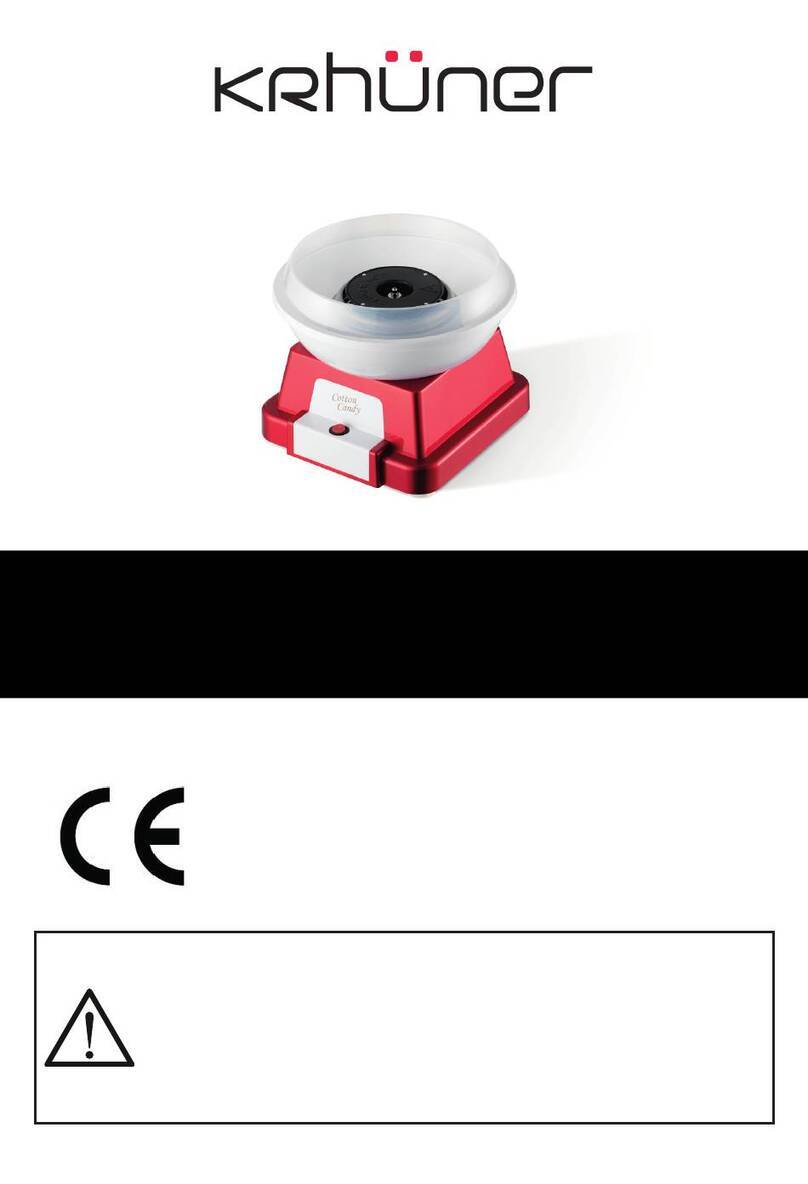
KRHÜNER
KRHÜNER 53212 instruction manual
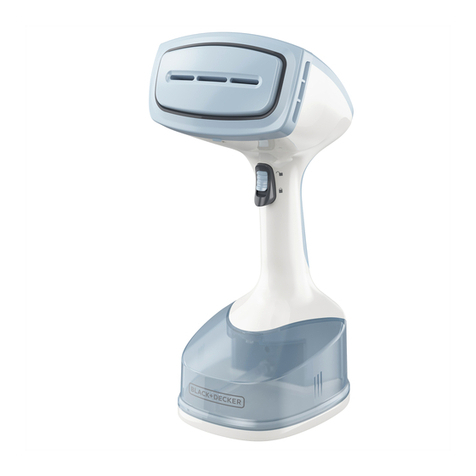
Black & Decker
Black & Decker HGS200 Series use and care manual
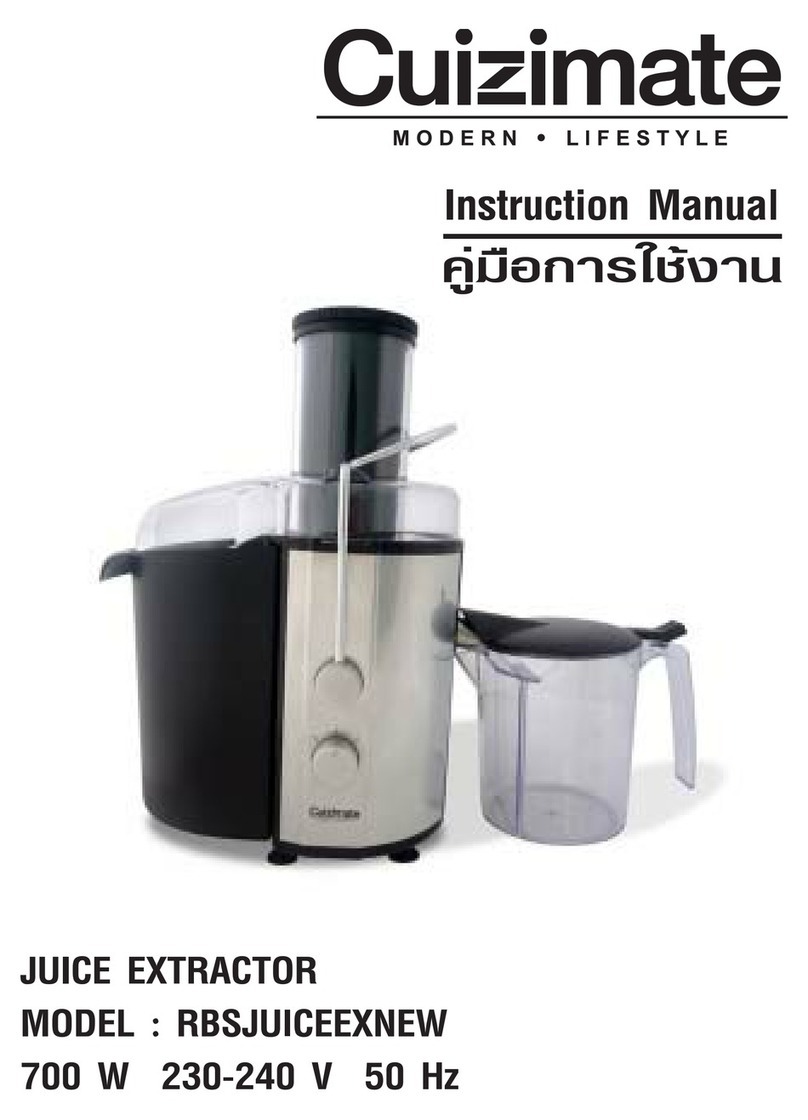
Cuizimate
Cuizimate RBSJUICEEXNEW instruction manual
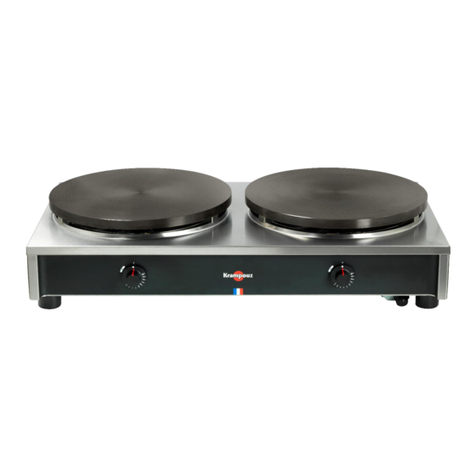
Krampouz
Krampouz CSRS4 operating instructions
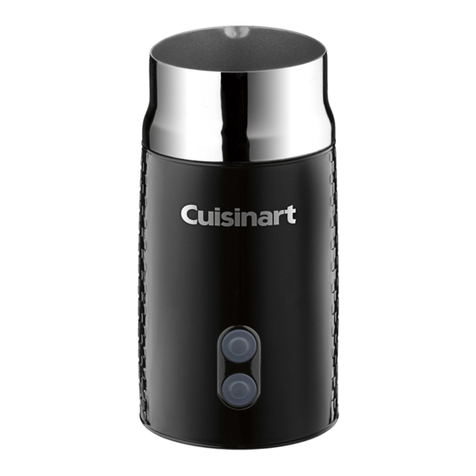
Cuisinart
Cuisinart Tazzaccino FR-10C Series INSTRUCTION AND RECIPE BOOKLET

Eurotech
Eurotech ED-WD45BCSS instruction manual
